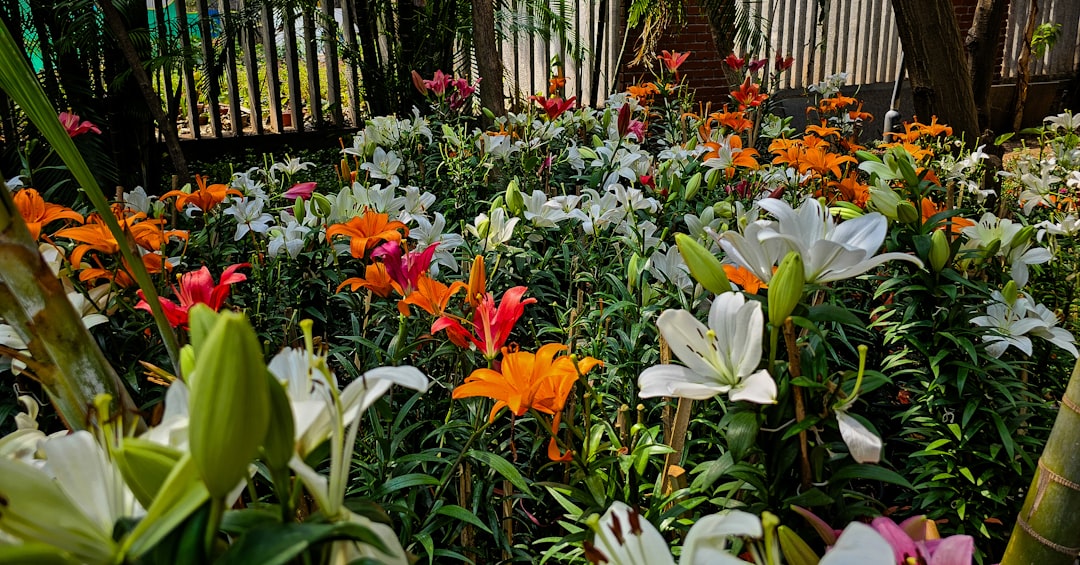The Enchanting World of Wallflowers: A Gardener's Delight

Annual flowers bring a burst of color and life to any garden, and among them, wallflowers stand out with their unique charm and adaptability. Wallflowers, as the name suggests, have a remarkable ability to thrive in the most unexpected places, such as between bricks and rocks on walls. In this article, we will delve into the world of wallflowers, exploring how to grow these beautiful annuals and enjoy their splendor in your own garden.
### The Allure of Wallflowers
Wallflowers belong to the genus Erysimum, and they come in a wide range of colors, including shades of yellow, orange, pink, purple, and red. Their fragrant blooms not only add a visual treat but also fill the air with a sweet, spicy scent that is truly captivating. These flowers typically bloom in the spring, making them a welcome sight after the long, cold winter months. They are also known for attracting pollinators such as bees and butterflies, which are essential for the health of your garden ecosystem.
### Choosing the Right Location
One of the key factors in successfully growing wallflowers is selecting the right location. Wallflowers prefer full sun to partial shade. A spot that receives at least six hours of sunlight a day is ideal. They are also quite tolerant of poor soil conditions, which is one of the reasons they can grow so well in the crevices of walls. However, the soil should be well - drained. If your soil is heavy clay, you can improve its drainage by adding organic matter such as compost or well - rotted manure. This will help the roots of the wallflowers to breathe and prevent waterlogging, which can lead to root rot.
### Planting Wallflowers
You can start wallflowers from seeds or purchase young plants from a nursery. If you choose to start from seeds, sow them indoors about 6 - 8 weeks before the last expected frost date in your area. Fill a seed tray with a good quality seed - starting mix and sprinkle the seeds on the surface. Lightly cover them with a thin layer of the mix, about 1/8 inch deep. Keep the soil moist but not waterlogged, and place the tray in a warm, sunny location. The seeds should germinate within 7 - 14 days.
Once the seedlings have developed a few sets of true leaves, you can transplant them into individual pots. Harden off the seedlings by gradually exposing them to outdoor conditions over a period of about a week before planting them in the garden. If you are planting young plants from a nursery, dig a hole that is slightly larger than the root ball of the plant. Place the plant in the hole, backfill with soil, and gently firm the soil around the base of the plant. Space the plants about 8 - 12 inches apart to allow for proper air circulation.
### Caring for Wallflowers
Watering is an important aspect of wallflower care. Water the plants regularly, especially during dry spells. However, avoid over - watering, as this can cause the plants to become weak and more susceptible to diseases. A good rule of thumb is to water deeply once a week, allowing the soil to dry out slightly between waterings.
Fertilizing wallflowers can also help them to grow and bloom more profusely. Apply a balanced, slow - release fertilizer at the time of planting and again in mid - season. Follow the instructions on the fertilizer package for the correct application rate.
Deadheading is another important task. As the flowers fade, remove them by pinching or cutting them off at the base of the flower stem. This will encourage the plant to produce more blooms and extend the flowering period.
### Dealing with Pests and Diseases
Wallflowers are generally quite resistant to pests and diseases. However, they can sometimes be affected by aphids, which are small, sap - sucking insects. You can control aphids by spraying the plants with a strong stream of water or using an insecticidal soap. Powdery mildew can also be a problem, especially in humid conditions. To prevent powdery mildew, ensure good air circulation around the plants and avoid overhead watering.
### Enjoying the Blooms
With proper care, your wallflowers will reward you with a spectacular display of color and fragrance. Cut some of the flowers to bring indoors and enjoy their beauty and scent in a vase. You can also leave the flowers in the garden to attract pollinators and create a vibrant, lively atmosphere. At the end of the growing season, you can collect the seeds from the spent flowers if you want to grow wallflowers again next year.
In conclusion, growing wallflowers is a rewarding experience that allows you to add a touch of nature's beauty to your garden. Their ability to grow in challenging locations, combined with their stunning blooms and sweet fragrance, makes them a must - have for any annual flower garden. So, why not give wallflowers a try and see the magic they can bring to your outdoor space?